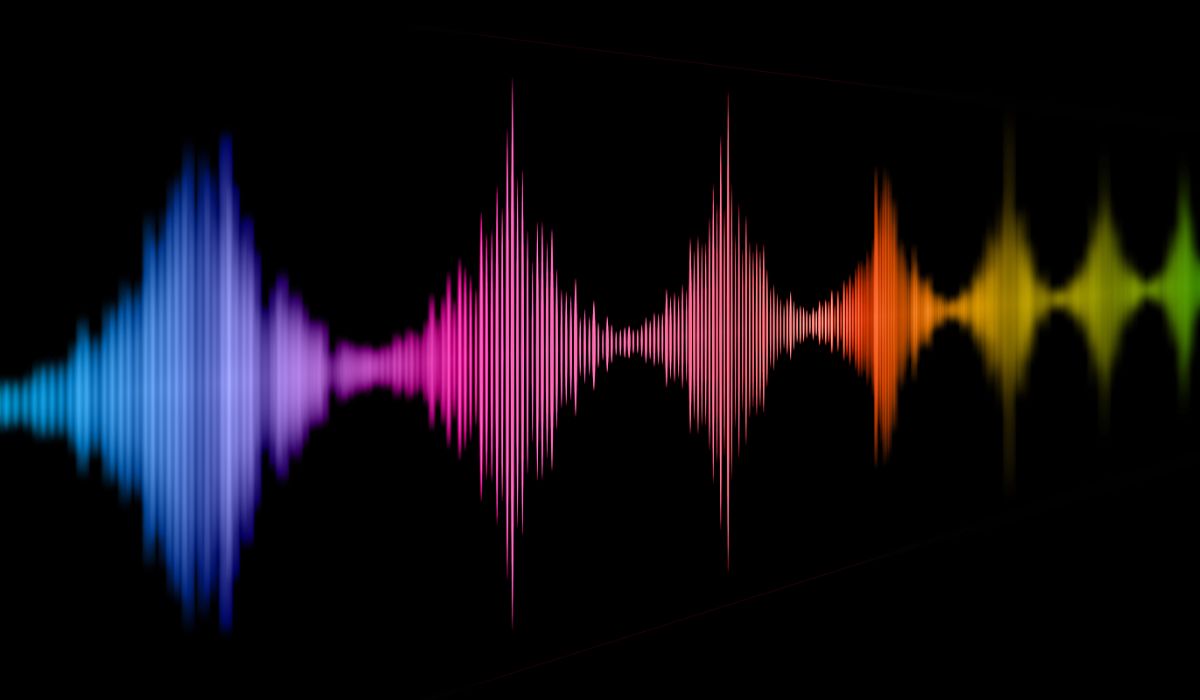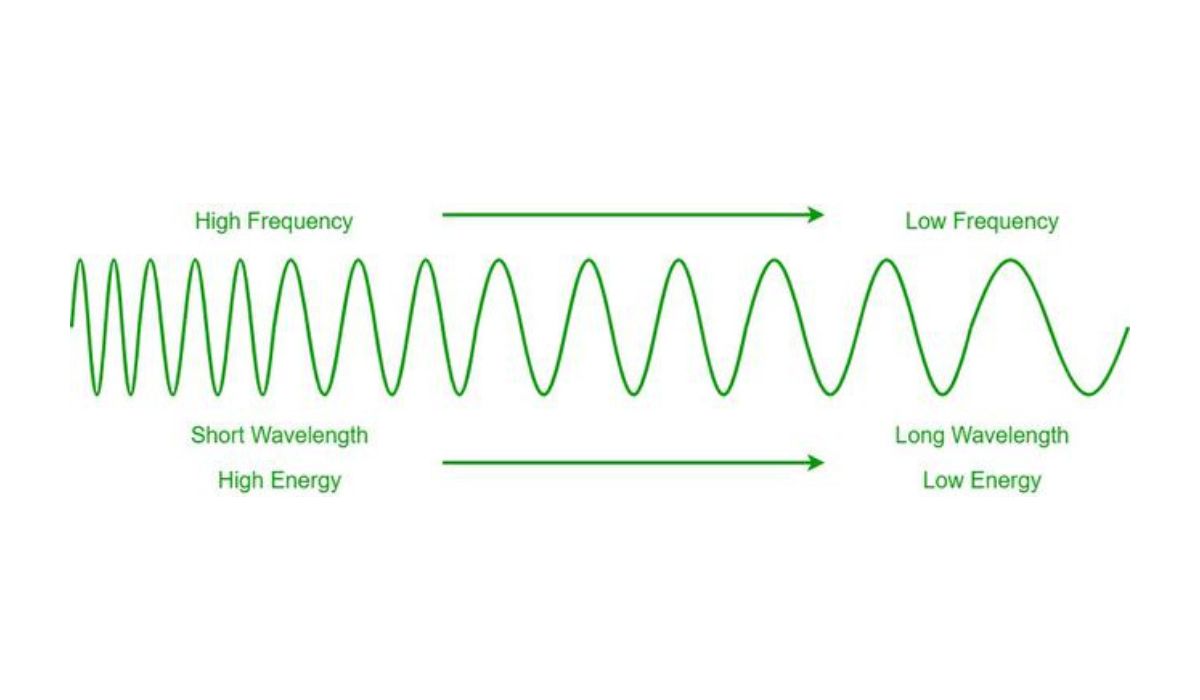Home>Devices & Equipment>Radio>How Were Radio Waves Discovered


Radio
How Were Radio Waves Discovered
Modified: January 22, 2024
Discover the fascinating story of how radio waves were first discovered and revolutionized communication. Explore the history and impact of radio technology.
(Many of the links in this article redirect to a specific reviewed product. Your purchase of these products through affiliate links helps to generate commission for AudioLover.com, at no extra cost. Learn more)
Table of Contents
Introduction
Radio waves have become an integral part of our modern world, enabling seamless communication and captivating entertainment. But have you ever wondered how these invisible waves were discovered and harnessed? The story of radio waves dates back to the 19th century, a time when scientists were exploring the mysteries of electricity and magnetism.
This article will take you on a journey through the fascinating history of radio waves, from early experiments with electricity and magnetism to the groundbreaking discoveries that paved the way for modern radio technology. Along the way, we will delve into the scientific principles and key figures who played a pivotal role in unraveling the mysteries of electromagnetic waves.
In the early 19th century, electricity and magnetism were seen as separate entities. However, through various experiments, scientists began to realize a deep connection between the two. This culminated in James Clerk Maxwell’s groundbreaking work in the late 1800s, where he formulated a set of equations that unified electricity and magnetism into one cohesive theory, known as Maxwell’s Equations.
Maxwell’s Equations not only provided a mathematical framework for understanding these phenomena but also predicted the existence of electromagnetic waves. According to Maxwell’s equations, these waves would travel at the speed of light and propagate through space without the need for any medium.
The experimental confirmation of Maxwell’s equations came in the late 19th century through the work of Heinrich Hertz. Hertz designed a series of ingenious experiments to generate and detect these electromagnetic waves. One of his key achievements was the construction of the first radio transmitter and receiver system.
While attempting to replicate some of Maxwell’s equations, Hertz inadvertently discovered the existence of radio waves. He observed that his transmitter produced electromagnetic waves that could be detected by a receiver placed a short distance away. This groundbreaking discovery revolutionized our understanding of electromagnetic radiation and laid the foundation for modern wireless communication.
In subsequent years, scientists and inventors built upon Hertz’s work, further exploring the properties and potential applications of radio waves. Advancements in technology allowed for longer-range transmissions, ultimately leading to the invention of the first practical radio communication system by Guglielmo Marconi in the late 19th century.
The discovery and harnessing of radio waves brought about a seismic shift in communication and technology. It paved the way for the development of numerous radio-based applications, such as broadcast radio, television, radar systems, and even wireless internet.
Today, radio waves permeate our daily lives, allowing for instant worldwide communication, delivering news and entertainment through the airwaves, and enabling seamless connectivity between devices. The humble invisible waves that were discovered over a century ago have transformed the way we live, work, and interact with the world around us.
In the following sections, we will delve deeper into the early experiments with electricity and magnetism, Maxwell’s Equations, Heinrich Hertz’s experimental confirmation, the discovery of radio waves and their properties, and the far-reaching impact of radio waves on communication and technology.
Early Experiments with Electricity and Magnetism
The story of radio waves begins with the exploration of electricity and magnetism in the early 19th century. During this time, scientists were conducting various experiments to unravel the mysteries of these natural phenomena.
One key figure in this search for understanding was Danish physicist Hans Christian Ørsted. In 1820, Ørsted made a groundbreaking observation while conducting an experiment with a compass needle near a conducting wire. He noticed that when an electric current passed through the wire, the compass needle deflected from its usual north-south alignment. This observation provided the first evidence of a link between electricity and magnetism.
Building upon Ørsted’s discovery, other scientists began to investigate the relationship between electricity and magnetism further. British scientist Michael Faraday played a crucial role in this exploration. In the 1830s and 1840s, Faraday conducted a series of experiments that demonstrated the conversion of electrical energy into mechanical energy, and vice versa. His work laid the foundation for the development of electric motors and generators.
Another key contributor in this field was Scottish physicist James Clerk Maxwell. In the late 1800s, Maxwell combined the knowledge gained from Faraday’s experiments with his deep understanding of mathematics to formulate a set of equations known as Maxwell’s Equations. These equations unified electricity and magnetism into one cohesive theory, describing how electric and magnetic fields are related and how they can interact with each other.
Maxwell’s Equations not only provided a theoretical framework for understanding electricity and magnetism but also predicted the existence of electromagnetic waves. According to these equations, changing electric and magnetic fields would create self-propagating waves that travel at the speed of light. Remarkably, Maxwell predicted that these electromagnetic waves could exist independent of any medium, such as air or water.
The prediction of electromagnetic waves by Maxwell was a truly groundbreaking concept, challenging the prevailing understanding of physics at the time. It opened up avenues for further exploration and experimentation. Scientists were eager to test Maxwell’s equations and confirm the existence of these waves.
It was the work of Heinrich Hertz that brought Maxwell’s equations to life through experimental confirmation. Hertz conducted a series of ingenious experiments in the late 19th century to generate and detect electromagnetic waves, thus providing tangible evidence of their existence.
The early experiments with electricity and magnetism laid the foundation for our understanding of electromagnetic waves and set the stage for Hertz’s groundbreaking work. These early pioneers paved the way for the discovery of radio waves and the transformative impact that they would have on communication and technology in the years to come.
Maxwell’s Equations and the Prediction of Electromagnetic Waves
In the late 1800s, Scottish physicist James Clerk Maxwell revolutionized our understanding of electricity and magnetism with his remarkable formulation of a set of equations that unified these two fields. These equations, known as Maxwell’s Equations, not only provided a mathematical framework for describing the behavior of electric and magnetic fields but also predicted the existence of electromagnetic waves.
Maxwell’s Equations are a set of four differential equations that describe how electric and magnetic fields are related and how they can interact with each other. These equations, when combined, form a comprehensive theory of electromagnetism. They describe the generation, propagation, and interaction of electric and magnetic fields in a coherent and consistent manner.
Within Maxwell’s Equations, there is a remarkable prediction: the existence of electromagnetic waves. According to Maxwell’s equations, a changing electric field creates a magnetic field, and a changing magnetic field creates an electric field. This interconnected relationship between electric and magnetic fields gives rise to self-propagating waves that can travel through space without the need for a medium.
Furthermore, Maxwell’s equations showed that these waves would propagate at the speed of light. This astonishing revelation indicated that electromagnetic waves were part of the same spectrum as visible light, X-rays, and other forms of electromagnetic radiation. It suggested that light itself was an electromagnetic wave.
The idea that light is an electromagnetic wave was a major turning point in our understanding of the nature of light. Previously, light was believed to be a separate phenomenon from electricity and magnetism. Maxwell’s equations unified these two realms and revolutionized the field of physics.
This prediction of electromagnetic waves by Maxwell’s Equations was a profound insight that challenged the prevailing understanding of physics at the time. It was a bold hypothesis that demanded experimental verification. Scientists were compelled to conduct experiments to confirm the existence of these waves and unravel their properties.
Maxwell’s predictions laid the foundation for further exploration and experimentation in the field of electromagnetic waves. They set the stage for the work of Heinrich Hertz, who would go on to experimentally confirm the existence of electromagnetic waves and make groundbreaking contributions to the discovery of radio waves.
Maxwell’s Equations and his prediction of electromagnetic waves were significant milestones in the history of physics. They opened up new avenues of study and paved the way for the development of wireless communication, as well as numerous other applications of electromagnetic radiation. Maxwell’s work laid the groundwork for the technological advancements that have become an integral part of our modern world.
Heinrich Hertz’s Experimental Confirmation
In the late 19th century, the experimental confirmation of electromagnetic waves brought James Clerk Maxwell’s theoretical predictions to life. It was German physicist Heinrich Hertz who conducted a series of groundbreaking experiments that demonstrated the existence and properties of these waves, thus solidifying Maxwell’s equations as a cornerstone of electromagnetic theory.
Hertz’s experiments involved the generation, transmission, and detection of electromagnetic waves using specially designed circuits. One of his key achievements was the construction of a simple but ingenious apparatus known as a Hertzian oscillator or spark gap transmitter. This device allowed him to generate electromagnetic waves and study their behavior.
By applying a high voltage to the gap between two conductors, Hertz was able to produce a spark and generate rapid oscillations of electrical charges. These oscillations created time-varying electric and magnetic fields, which subsequently emitted electromagnetic waves into the surrounding space.
Hertz then designed another apparatus known as a resonant circuit, which acted as a receiver to detect and measure the properties of the electromagnetic waves. This receiver consisted of a loop antenna and a parallel circuit with adjustable components to tune to the frequency of the transmitted waves.
Hertz’s experiments demonstrated several key properties of electromagnetic waves. Firstly, he showed that these waves were capable of propagating through space, unaffected by obstacles or the absence of a physical medium. This confirmed Maxwell’s prediction that electromagnetic waves could exist independently of a medium, such as air or water.
Secondly, Hertz discovered that electromagnetic waves could be reflected, refracted, and diffracted, similar to the behavior of light waves. This provided further evidence that light itself was an electromagnetic wave, in line with Maxwell’s theory.
Furthermore, Hertz conducted experiments to determine the wavelength and frequency of the electromagnetic waves. Through careful measurements, he determined that these waves had properties consistent with the predictions of Maxwell’s Equations.
Hertz’s experimental confirmation of electromagnetic waves marked a major breakthrough in our understanding of physics and set the stage for the practical applications of this newfound knowledge. His work laid the groundwork for the development of wireless communication systems, paving the way for inventions such as radio, television, and wireless telegraphy.
The impact of Hertz’s experiments was far-reaching, inspiring subsequent inventors and scientists to build upon his discoveries and further explore the potential applications of electromagnetic waves. His contributions to the field, along with Maxwell’s Equations, were instrumental in the development of modern communication and technology, transforming the way we live, work, and communicate in our interconnected world.
Discovery of Radio Waves and Their Properties
Building upon the groundwork laid by James Clerk Maxwell and Heinrich Hertz, the discovery of radio waves and their properties revolutionized communication and technology. The exploration of these electromagnetic waves led to remarkable advancements that would shape our modern world.
The discovery of radio waves is often attributed to Guglielmo Marconi, an Italian inventor and engineer. In the late 19th century, Marconi conducted numerous experiments to transmit signals wirelessly over long distances, using electromagnetic waves. His pioneering work marked the birth of wireless communication and set the stage for the development of modern radio technology.
Marconi’s experiments involved the construction of a transmitting station, which consisted of a spark gap transmitter and an antenna. By applying high voltage to the spark gap, Marconi created pulses of electromagnetic waves that were emitted into space. These waves could be detected by a receiver equipped with a similar antenna, located some distance away.
One of Marconi’s notable achievements was the successful transmission of a wireless signal across the Atlantic Ocean. In 1901, he sent a Morse code message from Cornwall, England, to St. John’s, Newfoundland, marking the first transatlantic wireless communication. This groundbreaking feat demonstrated the long-range capabilities of radio waves and showcased the potential of wireless communication on a global scale.
As scientists and inventors further explored the properties of radio waves, they discovered several unique characteristics. One significant property is the ability of radio waves to be modulated, or encoded, with information. This modulation, in the form of amplitude, frequency, or phase variations, allows for the transmission of sound, data, and other forms of information over the airwaves.
Another important attribute of radio waves is their ability to be transmitted and received on specific frequencies. This led to the development of the radio spectrum, a range of frequencies allocated for various applications such as broadcast radio, television, wireless communication, and radar systems. The efficient utilization of the radio spectrum has enabled a wide range of services and technologies to coexist harmoniously.
Furthermore, the discovery of radio waves and their propagation characteristics led to the development of techniques such as antenna design, signal amplification, and signal processing. These advancements played a crucial role in improving the efficiency and reliability of wireless communication systems, extending their reach and enhancing the quality of transmitted signals.
Over the years, radio waves have become an integral part of our daily lives. They enable us to tune into our favorite radio stations, enjoy television broadcasts, communicate wirelessly with smartphones and other devices, and access the internet through Wi-Fi technology. The impact of radio waves extends beyond communication, with their application in fields such as remote sensing, astronomy, and navigation systems like GPS.
The discovery of radio waves and the understanding of their properties have revolutionized the way we connect and communicate. From the invention of the radio to the advent of the internet of things, radio waves continue to shape our world, fostering connectivity and enabling the exchange of information across vast distances.
Impact of Radio Waves on Communication and Technology
The discovery and utilization of radio waves have had a profound impact on communication and technology, transforming the way we connect, exchange information, and navigate the modern world. The advent of wireless communication has opened up new possibilities and revolutionized various industries and fields.
One of the most significant impacts of radio waves is in the realm of mass communication. The invention of broadcast radio allowed for the widespread dissemination of news, music, and entertainment to audiences around the world. Through radio waves, people could tune in to their favorite stations and stay informed and entertained regardless of their location. The popularity of radio led to the creation of iconic programs, the rise of radio personalities, and the development of industries such as advertising.
Television, another transformative technology, relies on the transmission and reception of radio waves. Television broadcast allows for the delivery of audio-visual content to millions of households. It has become a dominant medium for news, entertainment, and cultural expression. Radio waves enable the transmission of television signals, making it possible for viewers to access a wide array of channels and programs from the comfort of their homes.
The advent of mobile communication owes much to the use of radio waves. Mobile phones and smartphones rely on wireless signals to facilitate voice calls, text messaging, and internet connectivity. Radio waves enable the seamless transmission of information between devices, enabling individuals to communicate from anywhere, anytime. Mobile technology has revolutionized not only personal communication but also business operations, healthcare systems, and emergency services.
The impact of radio waves extends beyond mere communication. Radio frequency identification (RFID) technology, which harnesses radio waves to track and identify objects, has transformed supply chain management, inventory control, and logistics. RFID tags attached to products can transmit unique identifiers, enabling efficient tracking and management throughout the distribution process.
Radar systems, based on the use of radio waves, have revolutionized navigation and aviation. These systems use radio waves to detect and measure the distance, speed, and direction of objects such as aircraft, ships, and weather patterns. Radar technology plays a crucial role in air traffic control, weather forecasting, and military operations.
Furthermore, the rise of the internet of things (IoT) is heavily reliant on radio waves. IoT devices, ranging from smart home devices to industrial sensors, communicate wirelessly through radio waves, allowing for seamless connectivity and data exchange between devices. This interconnected network of objects has the potential to revolutionize various sectors, from healthcare and transportation to energy management and agriculture.
The impact of radio waves on communication and technology spans across numerous industries and aspects of daily life. From the traditional use of radio and television to the advent of mobile communications, RFID technology, radar systems, and the internet of things, the influence of radio waves continues to shape our world and drive innovation.
Conclusion
The discovery and understanding of radio waves have had a profound impact on communication and technology, transforming our world in remarkable ways. From the early experiments with electricity and magnetism to the theoretical predictions of James Clerk Maxwell and the experimental confirmation by Heinrich Hertz, the journey of radio waves has reshaped the way we live, work, and connect.
Thanks to the pioneering work of scientists and inventors like Guglielmo Marconi, radio waves have become a cornerstone of wireless communication. The ability to transmit and receive information through these electromagnetic waves has revolutionized mass communication, with broadcast radio and television bringing news, entertainment, and cultural expression to millions of people worldwide.
Mobile communication, made possible by radio waves, has made communication more accessible and convenient than ever before. Mobile phones and smartphones, relying on wireless signals, have become essential tools for personal and professional communication, as well as for accessing information and services on the go.
Radio waves have also revolutionized various industries and fields. RFID technology has streamlined supply chain management and inventory control, while radar systems have transformed navigation and aviation. The internet of things, powered by radio waves, has opened up new possibilities for interconnectivity and automation across sectors.
The impact of radio waves is far-reaching, extending beyond communication to influence fields such as healthcare, transportation, agriculture, and energy management. The interconnectedness facilitated by radio waves has improved efficiency and productivity, enhanced safety and security, and brought new opportunities for innovation.
As we marvel at the reach and impact of radio waves, it is clear that this invisible force has become an integral part of our daily lives. The discoveries and advancements in the understanding of radio waves have shaped the way we communicate, access information, and navigate the complexities of the modern world.
Looking ahead, the continued exploration and development of radio wave technologies hold the promise of further transformation. As technology evolves, so too will the applications and capabilities of radio waves. With ongoing advancements, we can expect even more seamless connectivity, greater efficiency, and exciting opportunities for communication and innovation.
In conclusion, the discovery and harnessing of radio waves have revolutionized communication and technology. The journey from the early experiments to the practical applications of radio waves showcases the power of human curiosity, scientific inquiry, and technological innovation. As we continue to push the boundaries of what is possible, radio waves will undoubtedly play a significant role in shaping the future of communication and technology.











